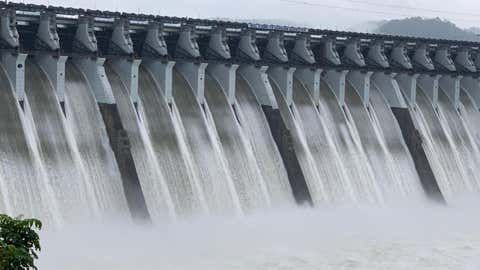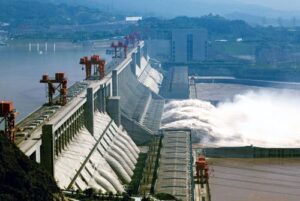China has recently approved the construction of the China’s Yarlung Tsangpo Mega Dam on the Yarlung Tsangpo River in Tibet, a river that transforms into the Brahmaputra upon entering India. This ambitious project is set to surpass the capacity of the Three Gorges Dam, which is currently the largest hydropower facility in the world. The new dam, located near Medog County, is expected to generate an estimated 300 billion kilowatt-hours of electricity annually, a figure that underscores its massive scale.
Strategic and Economic Objectives
The project aligns with China’s efforts to achieve carbon neutrality by 2060, a goal that necessitates a substantial increase in renewable energy capacity. It also aims to stimulate economic growth in the remote Tibetan region by creating jobs and fostering industrial development. With China heavily investing in infrastructure and energy projects, this dam represents another step in its drive to harness the full potential of its natural resources.
The construction of this dam has raised alarm in neighboring countries, particularly India and Bangladesh. The Yarlung Tsangpo/Brahmaputra is a transboundary river, and China’s control over its flow could have significant downstream effects. Key concerns include:
- Flood Risks: India fears that the release of large volumes of water, intentionally or unintentionally, could lead to flooding in border areas, especially during times of hostility.
- Water Scarcity: The dam may affect the river’s natural flow, potentially disrupting water supplies for millions of people downstream who rely on the Brahmaputra for drinking water, agriculture, and industry.
- . Ecosystem Impact: Alterations in the river’s flow could harm local ecosystems, affecting biodiversity and agricultural productivity in the region.
India has been expediting its own hydropower projects to counter China’s upstream developments. The Indian government has announced plans to invest $1 billion in the construction of 12 hydropower stations in Arunachal Pradesh, a region China also claims as part of South Tibet. This strategic move aims to assert control over shared water resources while boosting India’s renewable energy capacity.
Regional Implications
Construction of China’s Yarlung Tsangpo Mega Dam highlights the complex dynamics of transboundary water resource management in South Asia. While China asserts that the project will adhere to international norms and cause no harm to downstream nations, the lack of a water-sharing treaty between China and its neighbors exacerbates tensions.
China’s dam project on the Brahmaputra is both a testament to its engineering capabilities and a source of geopolitical friction. The initiative underscores the need for cooperative management of shared water resources to ensure equitable and sustainable outcomes for all stakeholders. As the project progresses, the importance of dialogue and collaboration between China, India, and Bangladesh cannot be overstated.

